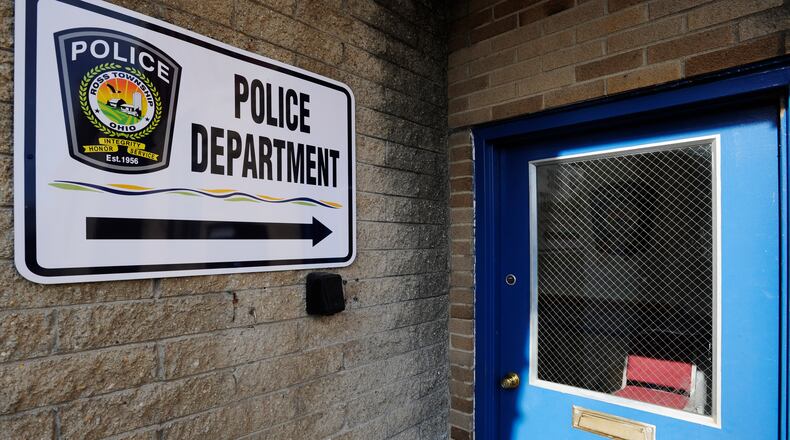RELATED: Ray Tensing case: 5 things to know
“Part of it is you look at the Ray Tensing thing, good, bad or ugly, whatever happens, happens. A lot of kids today are like ‘I don’t want to do that’,” Travers said. “You’re scrutinized for everything.”
Mark Wendling, Fairfield’s city manager, agreed the intense public scrutiny has likely caused people to reconsider wanting to become a police officer. The bigger problem for them is the dearth of part-time firefighters. Last year, overtime cost the city about $300,000.
Voters approved a fire levy last year that will allow the hiring of four new fire fighters, which should ease the burden, he said.
MORE: Fairfield passes fire levy
The problem is also costing Ross Twp., where the entire police force is part-time except for the acting chief. The township is considering asking residents for more money so it can hire more full-time staff.
“We find ourselves doing nothing but hiring somebody else’s future full-time employee and training them and then they leave,” Township Administrator Bob Bass said.
MORE: Ross Twp. mulling new police levy
The state has also added some requirements recently that make it more difficult for people to qualify to become police officers.
Dan Tierney, spokesman for the Ohio Attorney General Mike DeWine’s office — the entity in charge of OPOTA — said in 2015 it conducted an in-depth review of law enforcement training and recommended changes like drug testing and physical fitness assessments.
“New requirements for admittance into Ohio’s basic training academies may be a contributing factor to the lower enrollment numbers since 2016…,” Tierney said. “Because of these important new requirements, such as the requirement that an applicant have a high school diploma or GED and pass a drug screening, fewer people now qualify to enter into basic training to become a peace officer in this state.”
Even the full-time departments like Hamilton are seeing a decline in people wanting to take the exams for the police and fire departments.
Scott Scrimizzi, director of Public Safety, said they used to have hundreds of people lining up to take the tests. Last year 50 people took the firefighter’s exam and this year 47 took the test. On the police side, 112 people took the exam in 2015 and 163 last year.
“For us, long gone are the days like the 1980’s and 90’s when several hundred people sat for each of these exams,” Scrimizzi said. “We have tried to be as creative as possible to get not only more candidates but a more diversified group as well.”
On the fire side of safety services — where more departments use part-time fire fighter/EMTs — Liberty Twp. Fire Chief Paul Stumpf said part of the decline is people can get better paying jobs and not be exposed to the danger.
“You get a truck driving job it’s an eight-hour job, you’re home every night, you’re home every weekend,” Stumpf said. “You’re not out in all the weather, you’re not getting puked on and exposed to heroin, needles and Hepatitis and all that.”
West Chester Twp. is experiencing the same phenomenon. The township has 73 part-time positions authorized and 23 of those jobs are vacant. Township Administrator Judi Boyko said she believes the economy is also at work here.
During the Great Recession, Butler County laid off more than 100 full-and-part-time sheriff’s employees. The same played out in most places. The recovery is creating new full-time positions that part-timers are jumping at.
RELATED: Butler County learned from past budgetary disasters
“Those communities which may have reduced career workforce because of the recession are now and have been hiring,” Boyko said. “The most likely candidates are part-time fire employees already trained and experienced by another public sector employer.”
Monroe’s Assistant Fire Chief Richard Mascarella had another take on how the economy has impacted his field.
“I believe there are several reasons among them is a backlash of the economy issues from a few years ago when departments had to lay off firefighters, which made the position of firefighter/paramedic less appealing to those planning for a career,” he said. “And much like the lack of mechanics, HVAC technicians and other manual labor fields, young people entering the job market are training for and seeking tech jobs.”
Travers, of Butler Tech, said the school hasn’t experienced a drop in those enrolled in its firefighter courses but enrollment in the volunteer programs at Butler Tech are down 10 percent during the past five years. He said these days firefighters usually also must be certified emergency medical technicians, which entails hundreds of hours of training.
“This is hard work, this is not for everybody,” he said. “We’re certainly not trying to talk them out of it, but we want to give them a realistic picture of what they are getting into, the number of hours that it’s going to take. A fire card, to a fire chief is of very little value because 80 to 90 percent, depending on the jurisdiction that you serve, is EMS runs so you have to be cross trained.”
About the Author
